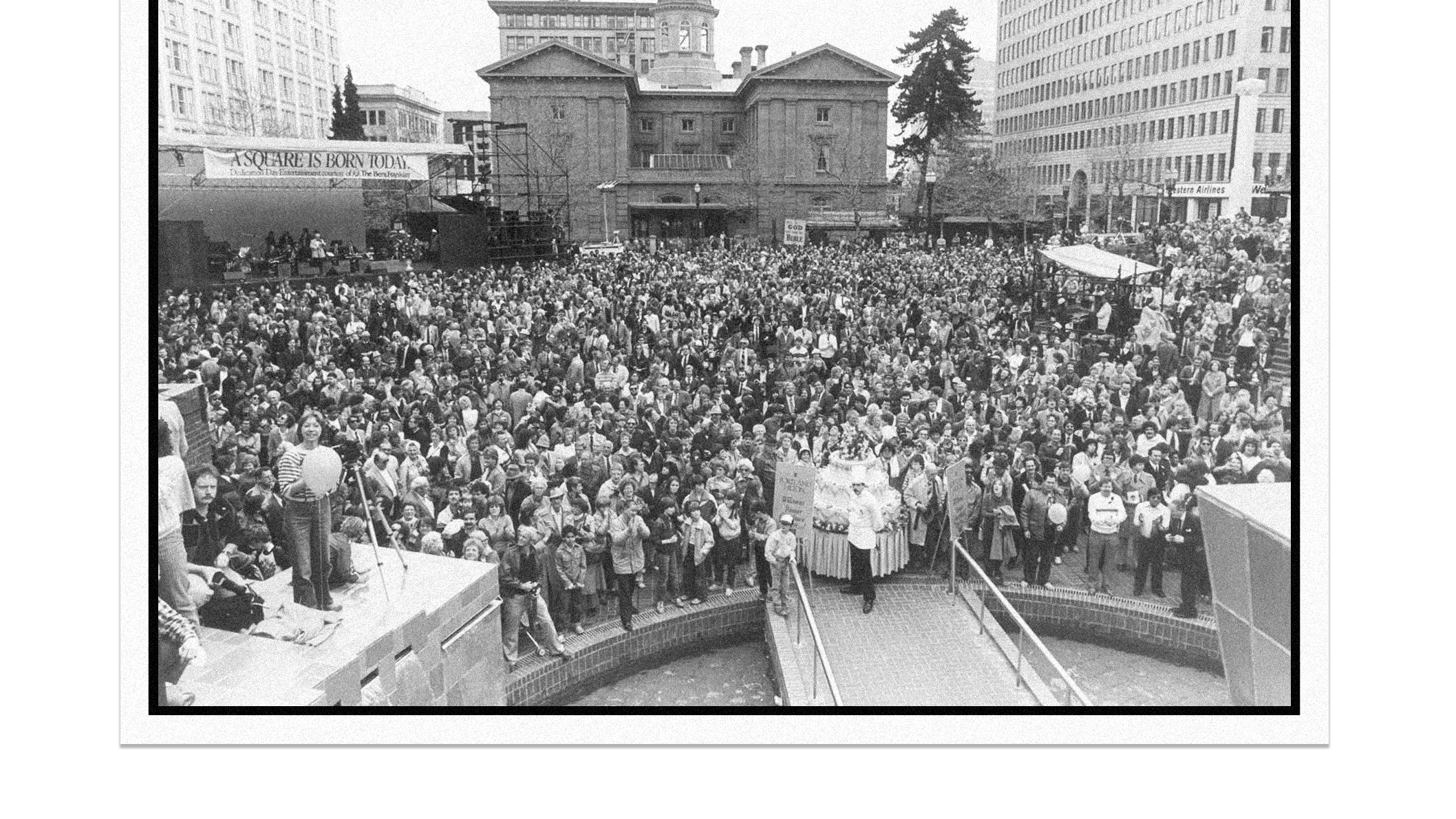“There was a really strong possibility it wasn’t going to happen,” says former City Commissioner Mike Lindberg.
Today, Pioneer Courthouse Square is one of Portland’s iconic landmarks. Each year, it welcomes more than 10 million visitors, who flock there for food carts, concerts, summer movie nights, art installations, and craft markets.
But it was almost a parking garage.
The prime downtown block played many roles in its long history. It was home to Portland’s first permanent public school in the horse-and-buggy days. Later, it hosted the glamorous eight-story, 326-room Portland Hotel, which was torn down to make way for a parking lot for Meier & Frank. In 1970, the department store petitioned the city to build a 12-story parking tower, but the City Council hit pause.
With a vision of revitalizing downtown, Portland progressives saw huge potential in the block. After years of wrangling, the city bought the block from Meier & Frank and held an international competition to solicit ideas for the space.
A Portland team, led by University of Oregon grad Will Martin, beat out 160 other submissions with their plans for the block, inspired by the Greek “agora.”
“Early Greek villages had an agora or small city square often bordered with a stoa (pillared walkway) at the edges…a place for people to gather, sell fish or firewood and discuss the politics of the time,” Martin’s team wrote.
Muttering about hippies and transients taking over, Mayor Frank Ivancie rallied business owners in an effort to kill the plan. Others pushed for an enclosed space, like a botanical garden or even—bizarrely—an aviary.
Sensing danger, Lindberg sprang into action.
He teamed up with fellow Commissioner Charles Jordan to form Friends of Pioneer Courthouse Square. They raised more than $1.5 million to support the project, notably by selling about 50,000 bricks to be used in the square, inscribed with names of donors.
“There were hundreds and hundreds of people that were down there selling those bricks and advocating for it in every way,” Lindberg says. “It really had to do with, should it be for the public and open to everybody, or should it be something that’s covered that maybe you have to pay admission to?”
More than 10,000 people gathered when the square opened on April 6, 1984. Lindberg considers it one of the city’s most striking success stories.
“It is a place of protest and celebration,” Lindberg says, citing visits by presidential candidates, war protests, and major festivals.
What’s the future for the square? “You have a changing downtown,” Lindberg says. “We’re really going to have to do even a better job in terms of being a center for arts and culture, for special events.” He believes the square will have a front-row seat to it all, with unique events that bring Portlanders together, at the heart of the city they call home.
Up next: Check out the 40th annual Tree Lighting Ceremony, the Holiday Brew Fest, and the 33rd annual Tuba Christmas Concert.
Next Story > 1984: Terry Currier
 Opens in new window
Opens in new window
